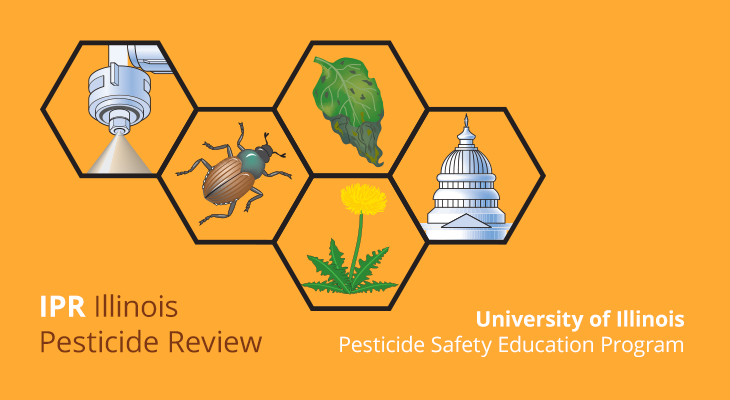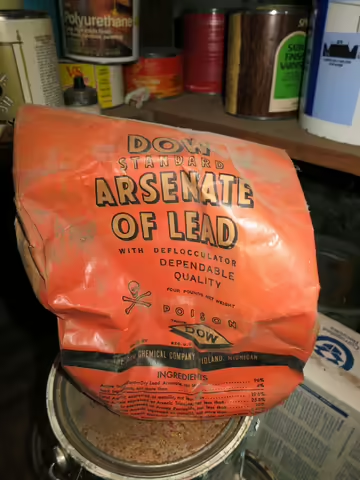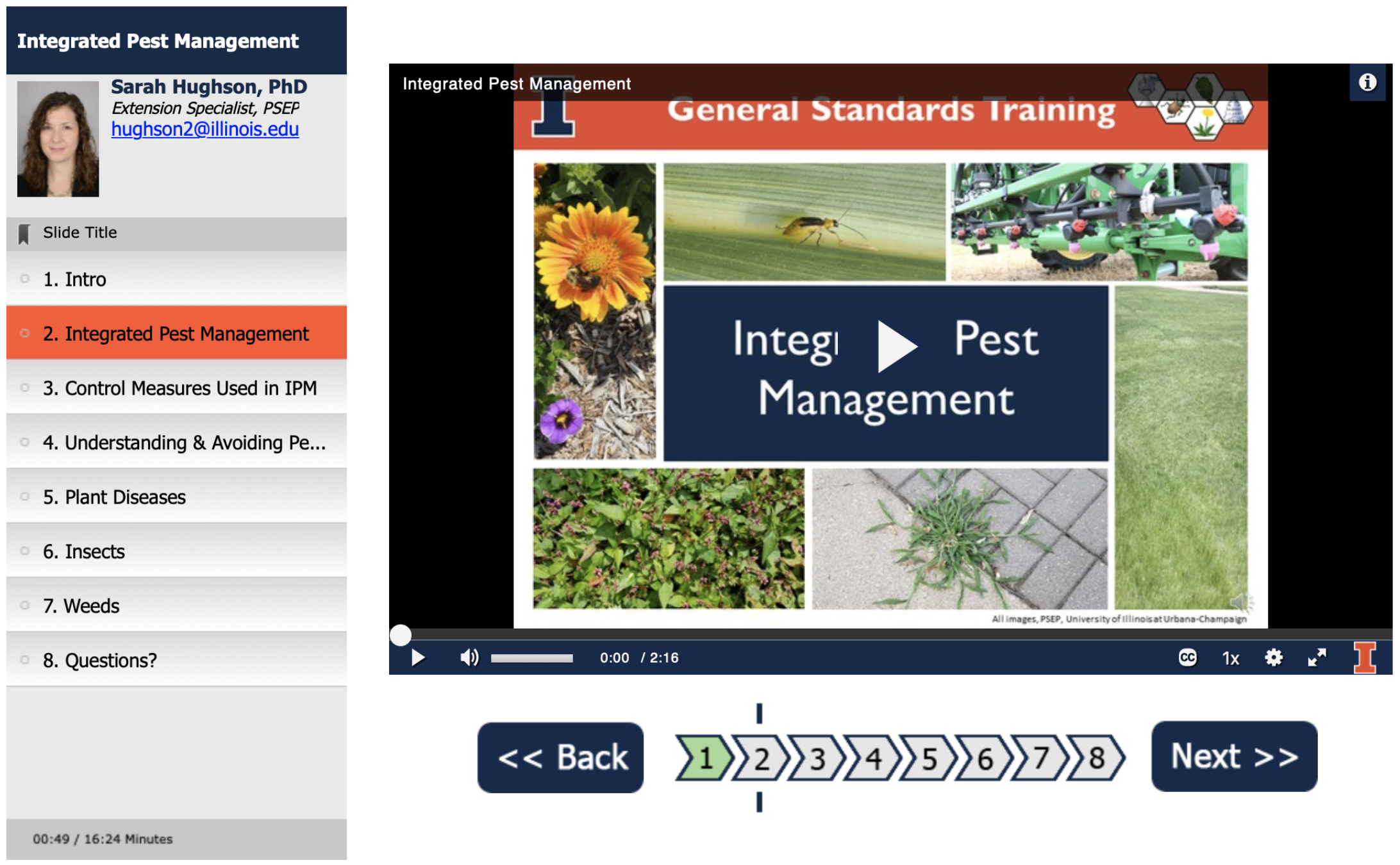
Illinois EPA Announces Spring Household Hazardous Waste Collection Events for 2021
SPRINGFIELD – Illinois EPA Director John J. Kim today announced the Household Hazardous Waste (HHW) collections for the spring of 2021. Illinois EPA HHW collections provide residents with free collection events to safely dispose of unused or leftover hazardous household products commonly found in homes. As with past events, all Illinois EPA HHW collections are contactless for the safety of participants. Additional safety tips are included following the schedule below.
“Our Household Hazardous Waste Program has worked to provide more opportunities for residents that rely on these events to dispose of old, unused chemicals and other hazardous products in a safe and proper manner,” said Director Kim. “Last fall, we announced five hubs that will be supplemented with other collection partners to more thoroughly cover the State. Thanks to our many co-sponsors, we now have partnerships with eight hub locations to continue offering this essential program to more communities.”
The HHW hub partners include the City of Bloomington, the City of Effingham, the City of Springfield, the City of Quincy, Champaign County, Jackson County, Peoria County, and Rock Island County. Those not included on the spring schedule are planning fall 2021 events.
Each year, Illinois EPA coordinates with local municipalities to conduct one-day collections to provide no-cost public drop-offs for the disposal of household hazardous waste. The first of these collections began in November 1989. Since then, over 401,350 households have participated in 449 events, with more than 78,100 drums of material collected.
One-day collections are open to all Illinois residents and operate from 8:00 a.m. to 3:00 p.m. on the day of the event. Residents participating in these events are encouraged to bring chemical cleaners, oil-based paints, thinners, antifreeze, motor oil, gasoline, kerosene, weed killers, insecticides and pesticides, old or outdated medication, and similar hazardous household products. Fluorescent and other high-intensity discharge lamps may also be brought to the collections. ITEMS NOT ACCEPTED include latex paint, explosives, propane tanks, fire extinguishers, smoke detectors, agricultural chemicals and business wastes.
A complete list of household hazardous wastes that are and are not accepted is available online.
The spring 2021 one-day collections are scheduled on Saturdays as follows:
- March 27 – Hillsboro, Montgomery County, Montgomery County Farm Bureau, 102 North Main Street, Hillsboro, IL, Co-sponsor: Montgomery County
- April 10 – Champaign,* Champaign County, Market Place Shopping Center, 2000 North Neil Street, Champaign, IL, Co-sponsor: Champaign County
- April 17 – Carthage, Hancock County, Hancock County Office, 550 North Madison Street, Carthage, IL, Co-sponsor: Hancock County Farm Bureau
- May 1 – Sterling, Whiteside County, 202 Wallace Street Sterling, IL, Co-sponsor: City of Sterling
- May 15 – Henry, Marshall County, Marshall Putnam County Fairgrounds, 915 University Avenue, Henry, IL, Co-sponsor: North Central Illinois Council of Governments
- May 22 – Waterloo, Monroe County, Monroe County Fairgrounds, 4177 IL-156, Waterloo, IL, Co-sponsor: City of Columbia
- May 22 – Herscher, Kankakee County, Herscher High School, 501 North Main Street, Herscher, IL, Co-sponsor: Herscher Community Unit School District #2
- June 5 – Aurora,* Kane County, 200 North River Street Aurora, IL, Co-sponsor: City of Aurora
- June 12 – Glencoe,* Cook County, 275 Park Avenue Glencoe, IL, Co-sponsor: City of Glencoe
- June 19 – Carbondale,* Jackson County, SIUC Arena Parking Lot, 1400 Arena Drive Carbondale, IL, Co-sponsor: Jackson County
- June 26 – Lake in the Hills, McHenry County, Huntley School District - Reed Road Campus, 10910 Reed Road, Lake in the Hills, IL, Co-sponsor: McHenry County
*These events require pre-registration. Please contact the event co-sponsor to preregister:
- Champaign: Sign up here. Susan Monte, 217-819-4127.
- Aurora: Kelvin Beene, 630-450-4657
- Glencoe: Megan Olson, 847-835-4111
- Carbondale: Kassidy Phoenix Stevens, 618-684-3143
For safe transport of household hazardous waste, residents are asked to:
- Pack household hazardous waste items in a disposable box to avoid spilling during transport.
- Keep like chemicals together and separate unlike chemicals.
- Secure lids and make sure containers are not leaking.
- Place box(es) of household hazardous waste in empty trunk of your vehicle, away from passengers during transport.
- Remain in vehicle at collection site. Onsite personnel will remove the household hazardous waste from your vehicle.
In addition to the one-day collections, longterm collection facilities are available for disposal of household hazardous waste throughout the year. Those locations, and additional information can be found online.
Source: Illinois Environmental Protection Agency
Press Release, March 18, 2020, Springfield, IL
Dermal Toxicity and Absorption Rates
By Maria Turner
What comes to mind when you think of absorption rates? When I think of an absorption rate, the first thing that comes to mind is a paper towel and how fast it can absorb mom’s first cup of coffee that was just knocked off the counter by two little boys in a sword fight. Of course, some brands of towels are faster than others. It isn’t often that I think about my body’s skin being like a paper towel, but it too can absorb substances. Imagine this slogan, “Your skin, the quicker picker-upper." Our skin is a vital organ to our body and can take in substances, including pesticides. A dermal exposure occurs when a pesticide contacts and enters the body through the skin. Dermal exposure can occur when mixing, applying, or otherwise handling a pesticide. It also happens to be the most frequent route of pesticide entry into the body, often going undetected.
The severity of this exposure depends on several factors:
- Dermal toxicity– the ability of a pesticide to cause injury when absorbed through the skin
- The absorption rate through the skin
- Size of the area of the skin that is contaminated
- Length of time the pesticide is in contact with the skin.
Pesticide manufacturers determine a product’s toxicity by exposing test subjects to various amounts of the pesticide. Because folks tend to shy away from volunteering to participate in these types of studies, researchers must rely on test subjects such as rats, mice, rabbits, etc. For dermal tests, the pesticide is placed on the skin of the test subject and covered with a bandage for 24 hrs. The dose of pesticide that kills 50% of the test animals is known as the LD50 value. For example, if 5 out of 10 animals weighing 1 kilogram die being given 100 milligrams of pesticide, the dermal LD50 is 100 mg/kg. The value can be high or low based on how toxic it is. A product with an LD50 value less than 200 mg/kg is poisonous in that it takes very little of that product to be lethal compared to a product with an LD50 of 2,000-20,000 mg/kg.
You will not find the LD50 number on a pesticide label. Instead, manufacturers provide a signal word based on the pesticide’s acute toxicity. The signal word allows users to gauge a pesticide’s toxicity quickly. In order of degree of toxicity, the signal words are DANGER (highly toxic), WARNING (moderately toxic), and CAUTION (slightly toxic). Be aware; some pesticides that are considered very low in toxicity are no longer required to have a signal word on the label. Remember, even though a pesticide may not have an indicated signal word, that does not mean it isn’t toxic. All pesticides, even those very lowly toxic, must be handled responsibly and with care.
Rates of absorption through the skin vary for different parts of the body. Areas of the body that are warm or moist (for example, head, groin, armpits, and neck) tend to absorb pesticides to a greater degree. Absorption can be quicker if there are cuts or abrasions on the skin but can be slower if there is more hair or thicker skin like calluses.
Pesticide formulations can vary in their ability to penetrate the skin. Additionally, it is not only the active ingredients that may be dangerous; many pesticides are carried in oil-based materials. If the oil carrier gets into the bloodstream, the results can be fatal. An oil-based formula like an emulsifiable concentrate will pass through the skin much faster than a water-soluble formulation. The oil crosses the skin barrier very rapidly and can carry pesticide’s active ingredients with it.
The absorption of some pesticides through the skin in higher absorption areas is rapid enough to approximate the effect of injecting the pesticide directly into the bloodstream. At this rate, this is more dangerous than swallowing the pesticide. Absorption continues to occur through the affected skin areas as long as the pesticide remains in contact with the skin. The exposure is more severe if the contaminated area is large or if the pesticide stays on the skin for a long time. It is recommended to wash work clothes and personal protection equipment (PPE) daily so that pesticides that reach the clothing or PPE do not create a repeated pesticide exposure.
Protecting your skin is vital when protecting yourself from pesticide poisoning. To reduce or avoid the potential for a dermal exposure, be sure to carefully read, understand, and follow the product label’s instructions. Be sure to wear adequate PPE. Finally, to reduce your potential for a pesticide-related accident, take proper precautions before and observe good safety practices during the application. Otherwise, your skin could be that paper towel.
Pesticide Record-Keeping Requirements
By Travis Cleveland and Michelle Wiesbrook
Although most applicators keep pesticide application records because it makes good agronomic sense to do so, there are legal reasons to keep these records as well. The purpose of this article is to sift through the gossip and guessing about the record-keeping requirements and get to the facts. As you will see, the type of information you are legally required to keep depends on your type of business and the type of pesticide you use. There is nothing wrong with keeping more detailed records than is required by law. Many folks view their pesticide records as a good “insurance policy” against false accusations. Although it is not required in Illinois, it is a good idea to record (on-site) wind direction and speed during the application should you find yourself in the middle of a drift complaint. Organic pesticides are no exception if they are registered pesticides. Additionally, under the federal rule organic certification requires application records. For more information on record requirements, contact your certifier.
Private Applicators
According to the 1990 Farm Bill, all private applicators (those who apply pesticides to their own land) must maintain records of restricteduse pesticide (RUP) applications. See Code of Federal Regulations Title 7 Part 110. The following information must be recorded within 14 days of the RUP application (Note: WPS exception below) and maintained for 2 years.
- The brand or product name, and the EPA registration number of the restricted use pesticide that was applied
- The total amount of the restricted use pesticide applied
- The location of the application (any identification system that accurately identifies the location of the application). For spot applications, simply enter “spot application” and a short description of the location. Greenhouses and nurseries must still give complete descriptions for spot applications (e.g., which bench, row, block, plant)
- The size of area treated, and the crop, commodity, stored product, or site to which a restricted use pesticide was applied
- The month, day, and year on which the restricted use pesticide application occurred
- The name and certification number of the certified applicator who applied or who supervised the application of the restricted use pesticide
Commercial Applicators
According to the Illinois Pesticide Act and Illinois Administrative Code, all commercial applicators must maintain records of RUP applications they make. The following information must be recorded and retained for 2 years from the date of application. In addition, federal regulations require all commercial applicators to furnish a copy of either the state or federally required records to the customer within 30 days of the RUP application (Note: WPS exception below).
- Name of the chemical (pesticide)
- USEPA registration number
- Amount of chemical concentration per unit treated (e.g., pounds or ounces per acre)
- Date of application
- Use site(s)
Pesticide Dealers
According to the Illinois Pesticide Act and Illinois Administrative Code, pesticide dealers must retain a record of each individual RUP sale for 2 years. The record must include the following information:
- Purchaser’s name, address, and certification number and type of certification if appropriate
- Quantity and kind of pesticide sold
- Date of sale
Worker Protection Standard Requirements
The record-keeping requirements are a bit different for producers who must comply with the Worker Protection Standard (WPS). The WPS requires “agricultural employers” to keep certain records for any covered use of a WPS labeled pesticide, either general-use or restricted-use. Additionally, the pesticide application records and hazard information must be displayed in a central location within 24 hours after the end of the application if workers or handlers are on the agricultural establishment. Records for all pesticide applications (including general-use pesticides) must remain available to employees for 2 years beyond the pesticide’s restricted-entry interval (REI).
WPS Pesticide Application Records:
- Name of the pesticide applied
- Active ingredient(s)
- EPA registration number
- The pesticide’s restricted-entry interval (REI)
- Crop or site treated
- Location and description of the treated area(s)
- Date(s) and times application started and ended
- Safety Data Sheet of the pesticide applied (Hazard Information)
Keep in mind, the WPS record-keeping requirements are in addition to the requirements previously listed for private and commercial applicators.
Label Specific Requirements
Some product labels require applicators to keep records that are more extensive. For example, the labels for dicamba formulations approved for over-the-top use on soybeans require 22 items to be recorded. These labels also state that the records must be generated within 72 hours after the application.
How should you keep pesticide records?
Since there are no standard forms required for any of these records, you can use any system you like, as long as the required information is included and it is legible and accessible to those who have a legal right to see it. Many pesticide companies, personal protection equipment suppliers, and other organizations offer record-keeping sheets or notebooks. In addition, there are many options for electronic record keeping, including an app by Iowa State University. Again, regardless of how you keep records, be sure you meet the requirements as outlined.
For more information about any of these laws, contact the Illinois Department of Agriculture at (217)785-2427, or the University of Illinois Extension Pesticide Safety Education Program.
Travis Cleveland Michelle Wiesbrook Revised March 2021 from an article written by Bruce Paulsrud, June 8, 2001
Looking for study materials for the pesticide applicator/operator exams?
Extension's new webstore allows for easy access to publications prepared by University experts. The Pesticide Safety Education section has many updated manuals and workbooks. This material can be useful for self-study during exam preparation. Additionally, these publications are great resources for pest identification and control.
Online Pesticide Safety Education Courses
Self-paced training courses to assist applicators in preparing for certification exams. Courses are available for most common categories of licensure, including:
General Standards
Private Applicator
Aquatics
Demonstration &
Research
Field Crops
Grain Facility
Mosquito
Ornamentals
Plant Management
Rights-of-Way
Turfgrass
Vegetable
Access to each course is available for a 30 day window upon purchase. Each course provides a linear flow of content which builds upon itself. You may review the course content as many times as you'd like during your access window. Take A Closer Look. Register now at the PSEP website.
Download This Issue of the Newsletter
Download, save, and share the 2021 March / April issue of the newsletter.
Editorial Notes
The development and publication of this newsletter has been supported with funding from the Illinois Department of Agriculture.
Michelle Wiesbrook, Extension Specialist, Pesticide Safety Education
The Illinois Pesticide Review is published six times a year. For more information about pesticide safety or for more issues of this newsletter, please visit us at www.pesticidesafety.illinois.edu. You can also reach us at 800-644-2123.
Disclaimer: Mention of trade names in this newsletter is for general information purposes only and does not constitute endorsement of one product over another, nor is discrimination intended against any product.
Copyright © 2021, Board of Trustees, University of Illinois
Find Us On Social Media
We’re on Facebook! Follow our University of Illinois Extension Pesticide Safety Education (PSEP) page for updates on programs, news, and events.



